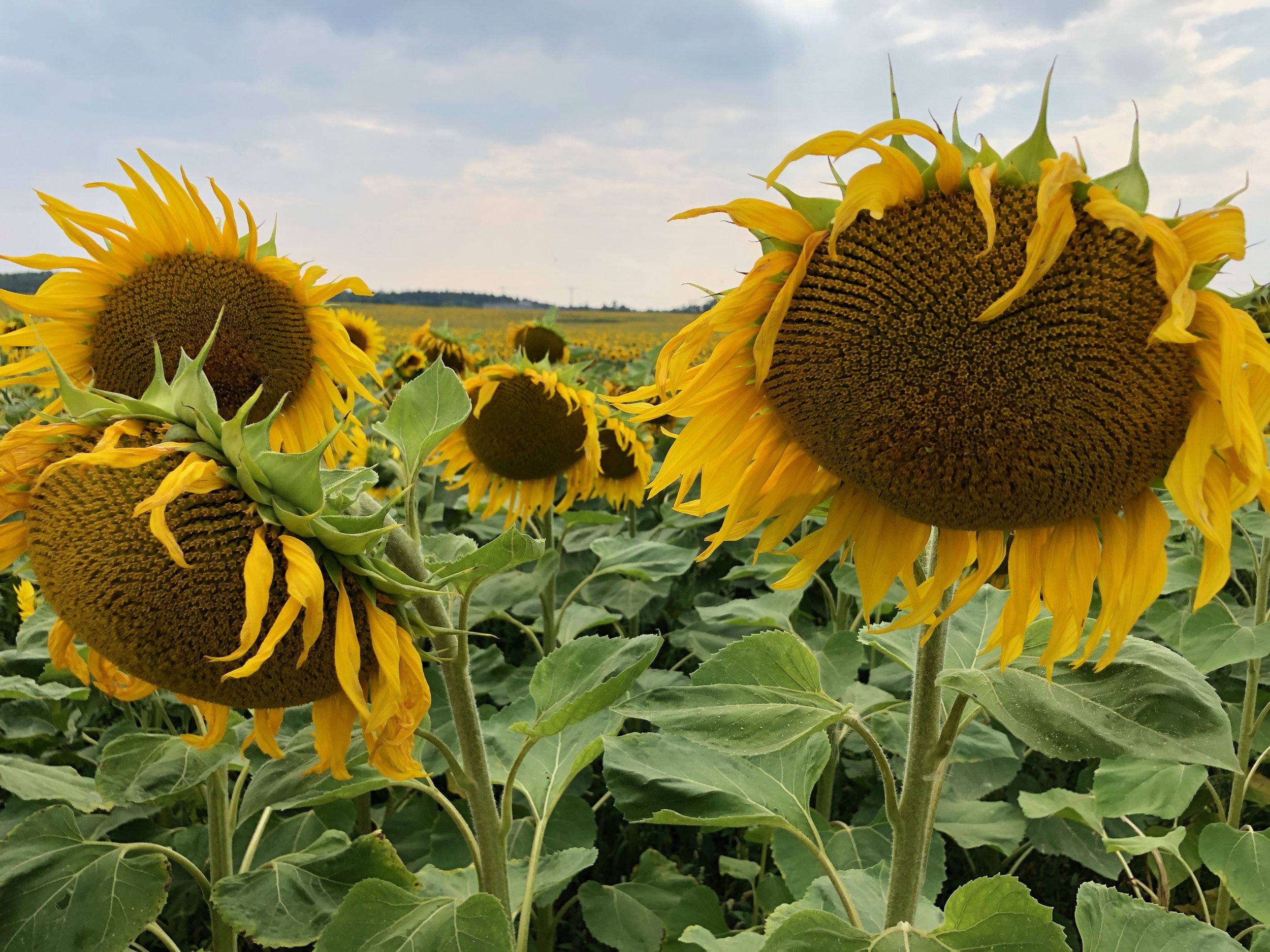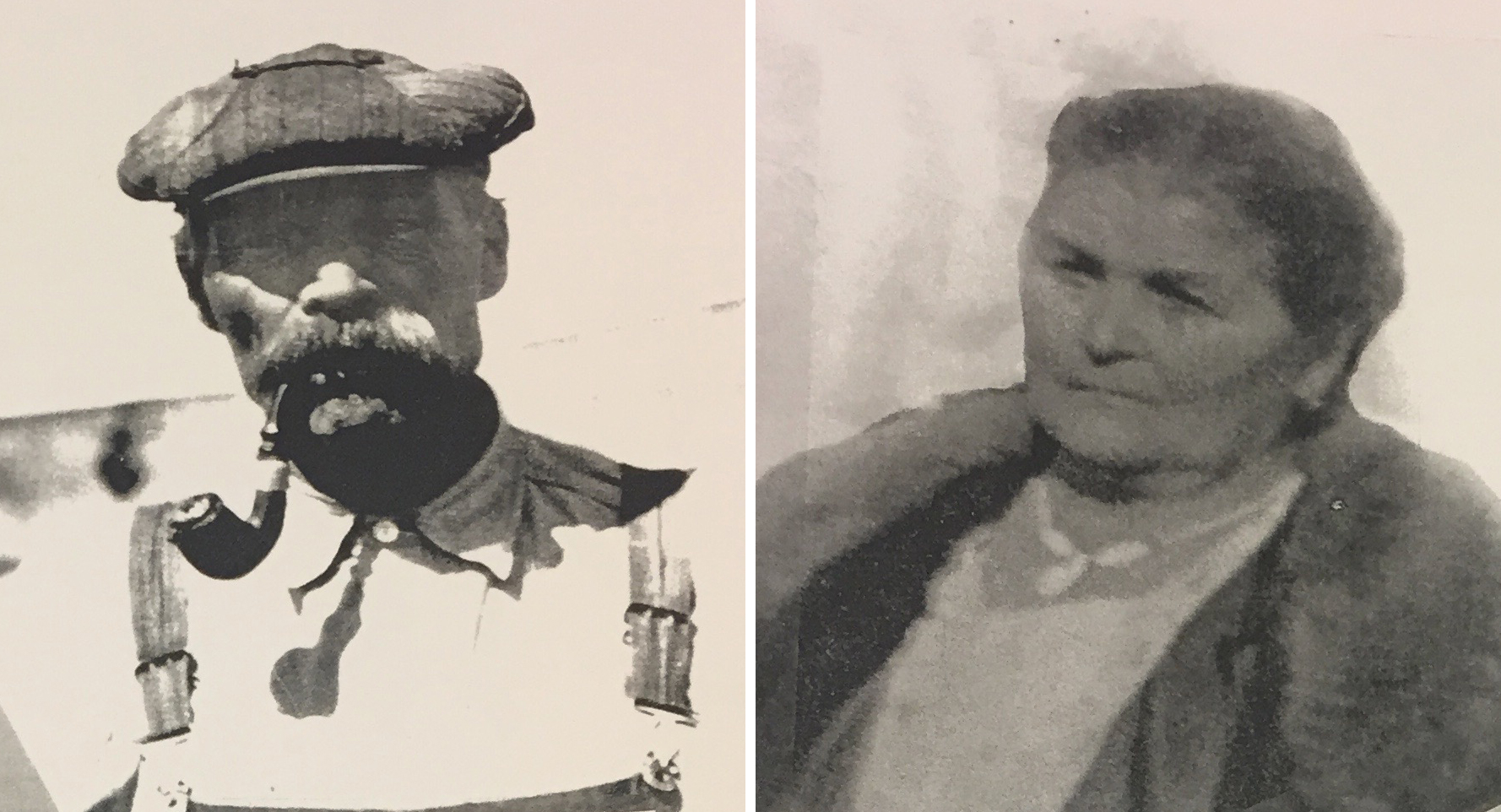My Mom's Mom's Mom's Mom
On my mother's side, my grandparents' grandparents immigrated from the Czech region of Austria-Hungary to the western United States around the turn of the 20th century. This is a brief history of my family's connection to the motherland.
We know little about the details of why our ancestors decided to come to America. The ad shown here is an example of the kind that were published in a Czech periodical in the late 1800s which coincided with the second wave of Czech migration to the United States. Likely my ancestors saw a vision of greater prosperity and decided to take the risk of a one-way journey to the new world.
Life in America
Source: Saxon-Ford, 1998
My grandmother's father's parents, Matej and Franziska, came by ship through Ellis Island in 1901. The journey from Europe to the U.S. would have taken about 1 month. From there, they went by railroad to what is today called the Oglala National Grassland in the northwest corner of Nebraska. It is remarkable because there is nothing but grassland as far as the eye can see.
When they immigrated, Matej was 33 years old and Franziska was 31. They had two children, Mary and Frank (3 and 2 years old). They would have seven more children in Nebraska, the second of which was my grandmother's father, Mike.
The Dakota War of 1862 and continued violence and oppression of the Native Americans had opened the door for settlers like my ancestors to come in. The Homestead Acts created an opportunity for land ownership (but only for non-Indians). The unfairness of this cannot be overstated.
The homestead process required that the land be improved and cultivated for at least five years. Paperwork required the applicant to certify that they were residing at the location and that the application was "not made for the purpose of fraudulently obtaining title to mineral land and that the land is not occupied and improved by any Indian." Essentially they had to certify that the land had no value other than to one poor family who was willing to work hard—and my ancestors fit that description well.
The Homestead House




Matej applied for citizenship and began the homestead process in 1913. The 280-acre homestead was officially approved and purchased by Matej in July of 1918 (exactly 100 years before our July 2018 trip to the motherland).
As an adult, Mike married Helen, also a child of Czech immigrants. Mike and Helen raised their family in the homestead house, including my grandmother (the lovely Doris Rose). Doris moved to Chadron Nebraska in the early 1950s to attend high school. After graduating high school, Doris married Don (my grandfather, also a child of Czech immigrants) and the two moved to the Pine Ridge Indian Reservation where Don's family leased land for farming.
My mother and her older sister have memories of living on the reservation before the family again moved back to Chadron. Chadron remained their home and is where my mother married my father in the mid 1970s after graduating high school.
I visited the site of the homestead with my grandmother and her late husband (Harry) in 2015. She told us stories about living there as a child, and she remembered the winter of 1949 when the snow piled so high it became nearly impossible to go outside. The family survived in part thanks to food relief dropped by US government aircraft (because travel by road was impossible).
I was impressed by how remote the homestead was. We visited on a hot summer day and the sunflowers had grown tall near the house. My grandmother remembered an old wives tale that tall sunflowers predict a harsh winter coming up. She explained that the sunflowers grow tall to provide food for the birds when the snow is deep.







5,000 Miles Away, A feeling of home(Stead)
On our 2018 journey to the motherland, we marveled at how much the landscape there reminded us of Nebraska. Our first two days cycling took us east of Prague to a region called Bohemian Paradise, where we excitedly took pictures of familiar sights, including fields of wheat, sunflowers, cows, and sleepy little towns with normal folks working and drinking beer.
Whether the grass is greener (or the sunflowers taller) on one side of the ocean or the other may change with the seasons. Sequoia's Czech friends have remarked that we are lucky our family got out before the World Wars and before communism when people lost so much of their possessions and culture. In 2018, we found the motherland to be a friendly and beautiful place with striking familiarity.
For more historical context see A Rough Timeline of Czech History.


